THE SETTLEMENT HOUSES
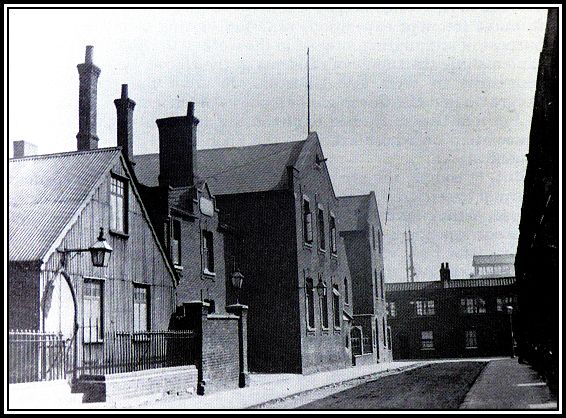 The Original Oxford House on Mape Street in Bethnal Green
The Original Oxford House on Mape Street in Bethnal Green
This photograph is reproduced with the permission of Oxford House and is from
Oxford House of Bethnal Green – 100 Years of Work in the Community by Mandy Ashworth
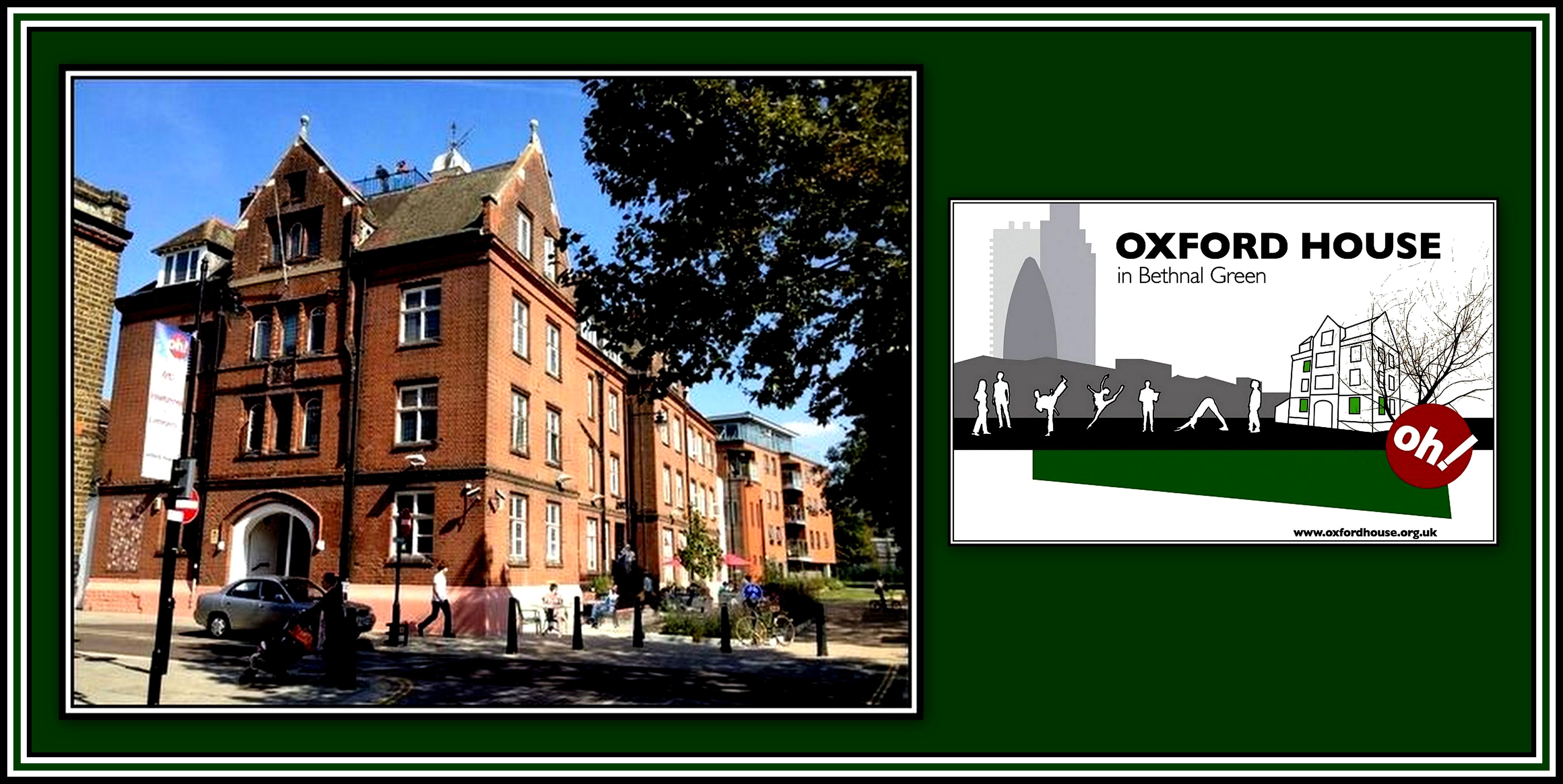 (The New) Oxford House on Derbyshire Street in Bethnal Green
(The New) Oxford House on Derbyshire Street in Bethnal Green
-oOo-
THE NEW OXFORD HOUSE SETTLEMENT
IN BETHNAL GREEN
Religious in Motive while Secular in Working
In 1889, The Reverend Arthur Winnington-Ingram (1858-1946) was appointed as the fourth Head of Oxford House since its inception. He held this position until 1897 during which time he also held other positions including: Chaplain to the Archbishop of York, 1889; Rector of Bethnal Green, 1895; Rural Dean of Spitalfields, 1896; and Canon of St Paul’s Cathedral, 1897. He was Bishop of Stepney from 1897 until 1901 when he was confirmed as the Bishop of London and made a member of the Privy Council. Throughout his life, he was a leader of Social Reform in the East End, although his administrative skills were often judged inefficient.
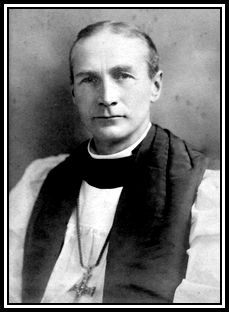 The Reverend Arthur Winnington-Ingram, Bishop of London (1901-1939)
The Reverend Arthur Winnington-Ingram, Bishop of London (1901-1939)
-oOo-
Since its foundation, the number of activities undertaken at Oxford House had steadily increased in number and had grown in popularity. It was now obvious to everyone involved with The Settlement that the present location on Mape Street at the National Day School in the Parish of St Andrew at Bethnal Green was no longer sufficient for its needs. As a result, the authorities agreed that Oxford House should move to a larger premises where it could offer current and additional programmes to of the area residents.
As a result, a fund-raising appeal was launched, which was greatly aided by Henry Scott Holland (1847-1918), Regius Professor of Divinity at Oxford University and a Canon of Christ Church Oxford.
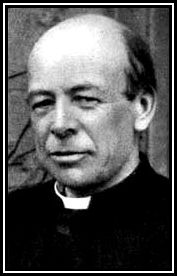 Henry Scott Holland, known in some circles as The Flying Dutchman
Henry Scott Holland, known in some circles as The Flying Dutchman
Professor Scott was a great supporter of Social Justice and founded several organisations during his lifetime to help improve the lot of the poor. He believed that Capitalist Exploitation was at the root of urban poverty and formed PESEK (Politics, Economics, Socialism, Ethics and Christianity) to help combat it. In addition, in 1889, he launched the Christian Social Union (CSU), which was a Social Gospel organisation associated with the Church of England that was dedicated to the study of contemporary social conditions and the remedying of poverty and other forms of Social Injustice through public mobilisation to alleviate these social plights.
Fund raising for the monies to build a new Oxford House and to purchase the necessary land was greatly helped by both the rallying cry of Professor Scott …….
COME AND BE THE SQUIRES OF EAST LONDON
together with the plea of The Reverend Arthur Winnington-Ingram made directly to Oxford University students …….
IF THEY WOULD NOT COME AND LIVE IN BETHNAL GREEN,
THEY MUST AT LEAST SUPPLY A HOUSE FOR THOSE WHO WOULD.
-oOo-
THE NEW OXFORD HOUSE
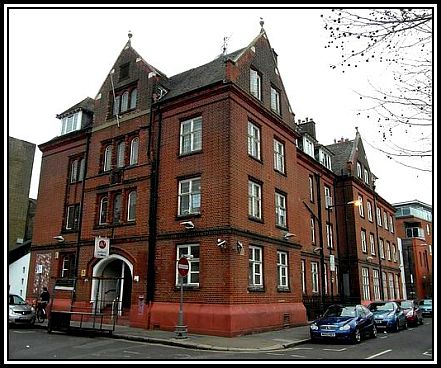 (The New) Oxford House
(The New) Oxford House
In 1890, Oxford House was being overseen by an Executive Committee, which was proving to show signs of marked defects. It was, for one thing, too large. The Committee had become, what could only be described, as consisting of too many cooks or too many generals. As a result, moving forward proved with plans for a new building became difficult since there was a stream of new members with their own opinions and who were oftentimes unsuited for the job.
To alleviate this problem, it was decided to form a Council of twelve members to supersede the Executive Committee, which was to consist of both Oxford University and London friends of The House. This proved to be successful and on 30th November, 1891, a Memorial Stone near the principal entrance of what would be the New Oxford House was laid by the Chairman of the Council.
The efforts of the fund-raisers in raising the necessary £12,000 were rewarded in 1892, when on the 23rd June, (The New) Oxford House, was opened by the Duke of Connaught. The House was a solid red-brick five-storey building on Derbyshire Street, just off Bethnal Green Road, and was designed by the architect Sir Arthur Blomfield (1829-1899) who had also designed The Royal College of Music and The Bank of England.
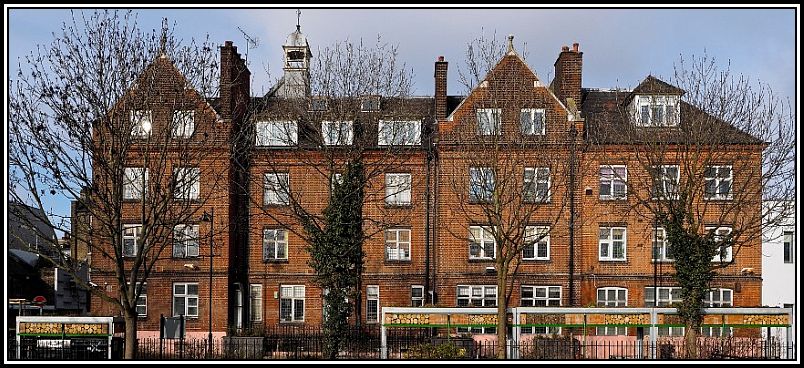 (The New) Oxford House, as seen from Weavers Fields
(The New) Oxford House, as seen from Weavers Fields
Oxford House was designated a Grade II listed building in 2011
-oOo-
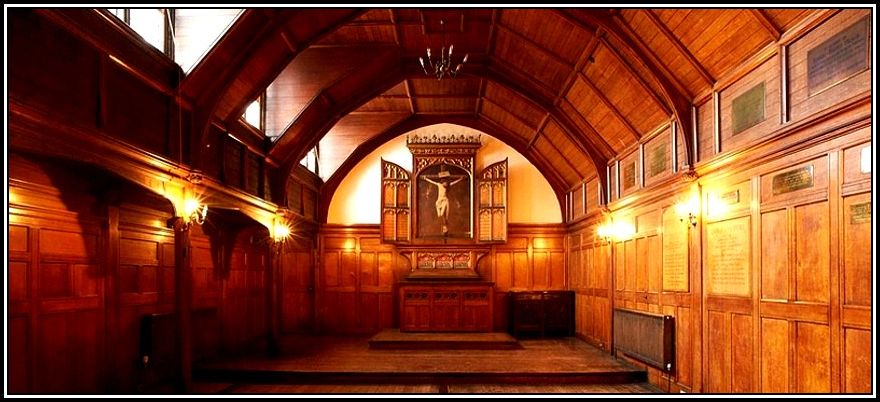
Oxford House was built with a Chapel on the third floor of the building. Here, services were held for the residents living at The House, although their presence, and that of other volunteers, were not mandatory. The services were open to the public.
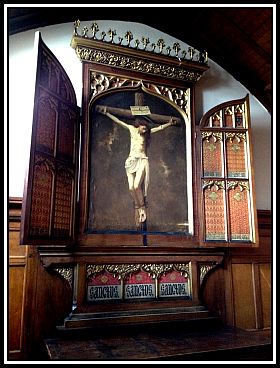
The Oxford House Chapel is a remaining link to The House’s beginning as a Christian Settlement House. The Chapel architecture is Neo-Jacobean and has a wooden screen at its entrance, wooden paneled walls and floors and a high arched ceiling. Over the alter of The Chapel is a painting of The Crucifixion, painted in 1914 by Alfred Usher Soord (1868-1916).
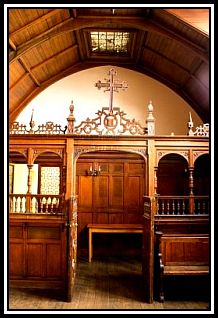
On one of the walls of The Chapel is a Memorial to the twenty-eight members of Oxford House who died during the First World War.
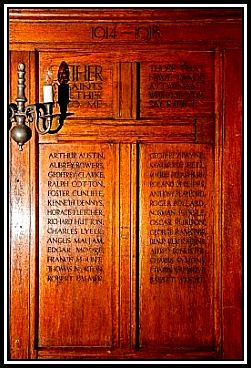
-oOo-
Eventually the services ceased and the space was used by choirs and various other groups until it had to be closed to the public due to the leaking roof. Restoration work began on The Chapel and was completed in 1997.
-oOo-
In 1895, Oxford House became involved in the efforts being made to save the Walthamstow Recreation Sports Ground from the hands of builders and to acquire it and maintain it as an open space. The grounds were often used by the Oxford House Clubs for cricket and football matches and as a place to hold garden parties. The Goldsmith’s Company, a benefactor of Oxford House, was able to purchase the area and later, on several occasions, it was able to add additional areas.
Today, the former Walthamstow Recreation Sports Ground is known as the Douglas Eyre Sports Centre. It was acquired in 1909 and is now part of the London Playing Field Foundation and is its largest ground.
-oOo-
Also in 1897, the services of A Poor Man’s Lawyer was offered to locals. Unfortunately, I am do not know how long this service was available to the local population.
-oOo-
In 1896, The Council of Oxford House commented on what had been achieved and what still remained to do:
But in this summing up the encouragements of the year let no one think that we ignore that we have done is merely a beginning of what has to be done. One would only have to spend a Boxing Day in Bethnal Green to see what a great deal has still to be done to alter the drinking habits of the district, while the rough estimate made at the Rectory Garden Parties in the summer given to the men of the new Parish revealed the fact that only about one in eighty went at present either to church or chapel. Against this enemy of drink and against this solid mass of paganism we must carry on with more zest and perseverance than ever or organised campaign.
-oOo-
At the end of 1897, The Reverend Arthur Winnington-Ingram resigned from his position at Oxford House to take up the position of Bishop of Stepney. And with his departure, the days of steady expansion of the activities of Oxford House came to an end.
Reverend. Bernard Wilson, the Rector of St. Matthew’s Church, succeeded The Reverend Winnington-Ingram as Head. Under the direction of Reverend Wilson, Oxford House and many of the churches of Bethnal Green worked in close harmony and The House sponsored a number of endeavours undertaken by some of these churches.
Following his university education at Keble College and a period of time as a Curate in Stepney, The Reverend Henry (Harry) St-John Woollcombe (1869-1941) was appointed Head of Oxford House in 1901.
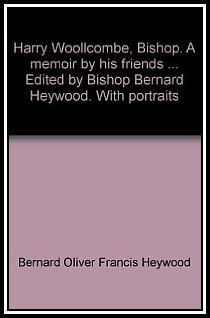
It was hoped that by making The Reverend Woollcombe as Head, it would dissociate the Headship from the Rectorship of the Diocese of Bethnal Green, and so allow the work undertaken by The House to become complementary and not identical to that of the churches of the area.
-oOo-
One of the principal aims of Oxford House was to offer help improve the health and welfare of the local populace. Their approach took a number of forms including:
- The Provident Society was set up in 1889 with the aim to provide good medical treatment and medicine on Provident and Mutual Assurance principles. Here, a monthly subscription gave a member and his family medicine, medical advice and treatment, when necessary, in their homes. The Club had its own physician who was assisted by two men from the outside.
- Penny Dinners were offered on four days each week for poor children who attended schools associated with The House for the price of one penny. It was not uncommon for ~300 dinners to be served each day.
- In 1886, The Limpsfield Boys’ Home was set up as a place where boys between 7- and 13-years of age could go for a period of three weeks to experience fresh air and the joys of being and playing outside.
- In 1898, Oxford House founded a Camp where members of its Clubs were able to spend a week’s holiday.
- Oxford House was also involved with a home for children, known as the Daisy Home. Unfortunately, I have been unable to find where this Home was located and when it was actually open.
- Later in 1899, Oxford House supported taking a three-year lease on a convalescent home, The Bexhill House, at Bexhill-on-Sea. In 1901, there were ninety-three patients that had passed through the home suffering from a variety of ailments, however later in the year, it was decided, based on the advice of the physician at the home, to admit only patients suffering with Phthisis who required open-air treatment. The Bexhill House was closed due to lack of finances in 1905. In addition, The Council now felt that the work of The House could not be described as the special work of a Settlement.
-oOo-

Phthisis is a disease characterised by the wasting away or atrophy of the body or a part of the body: e.g. Tuberculosis (Phthisis pulmonalis; known as Phthisis and Consumption from the time of Hippocrates until the 18th Century); Phthisis bulbi (shrunken, nonfunctional eye); Phthisis miliaris (miliary tuberculosis is a form of Tuberculosis that has spread throughout the body (i.e. a wide dissemination) and consists of small lesions (1–5 mm in diameter) that resemble Millet seeds.
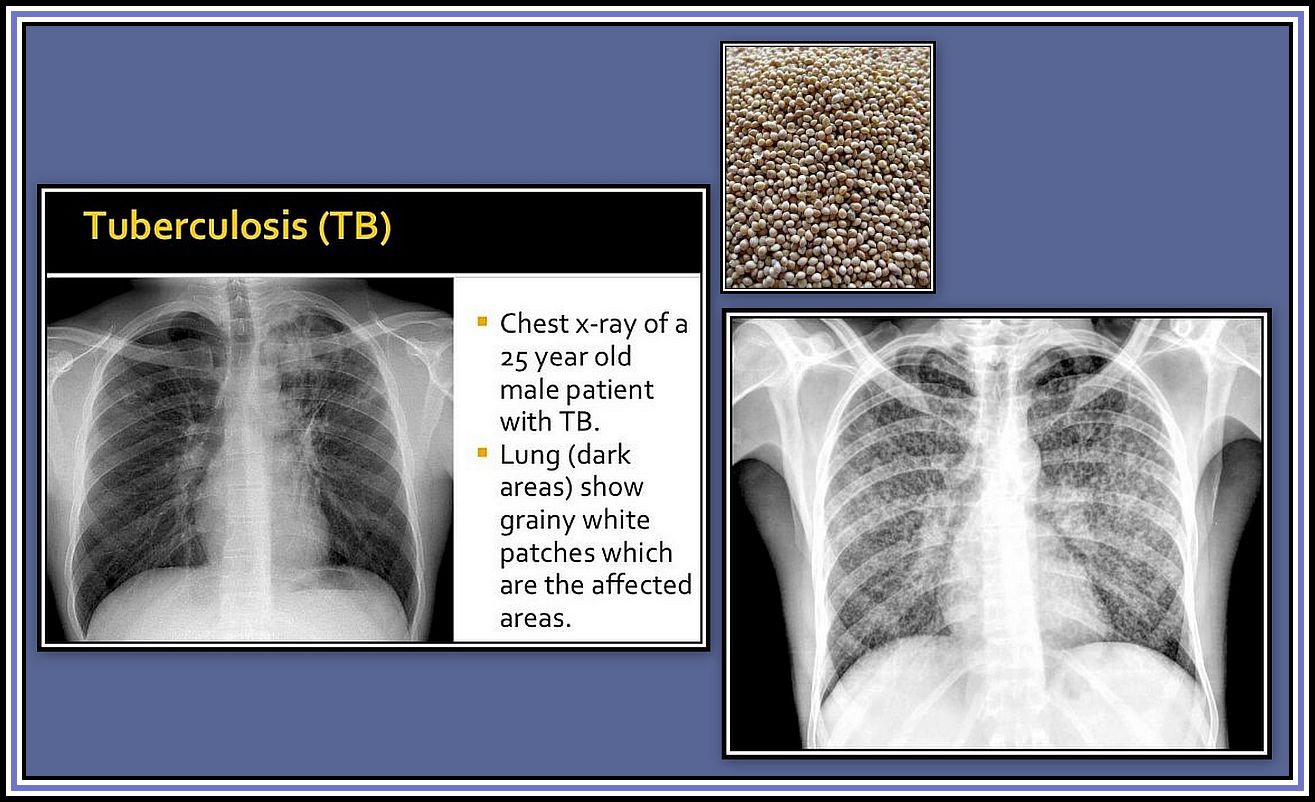 Top Right: Millet Seed; Bottom Right: Chest X-Ray of a Patient with Miliary Tuberculosis
Top Right: Millet Seed; Bottom Right: Chest X-Ray of a Patient with Miliary Tuberculosis
During the 18th and 19th Centuries, Tuberculosis was epidemic in Europe and caused millions of deaths, particularly in the poorer classes of society. Although Tuberculosis has declined after the late 19th Century, it remains a major public health issue today and saw a resurgence during the 1980s.
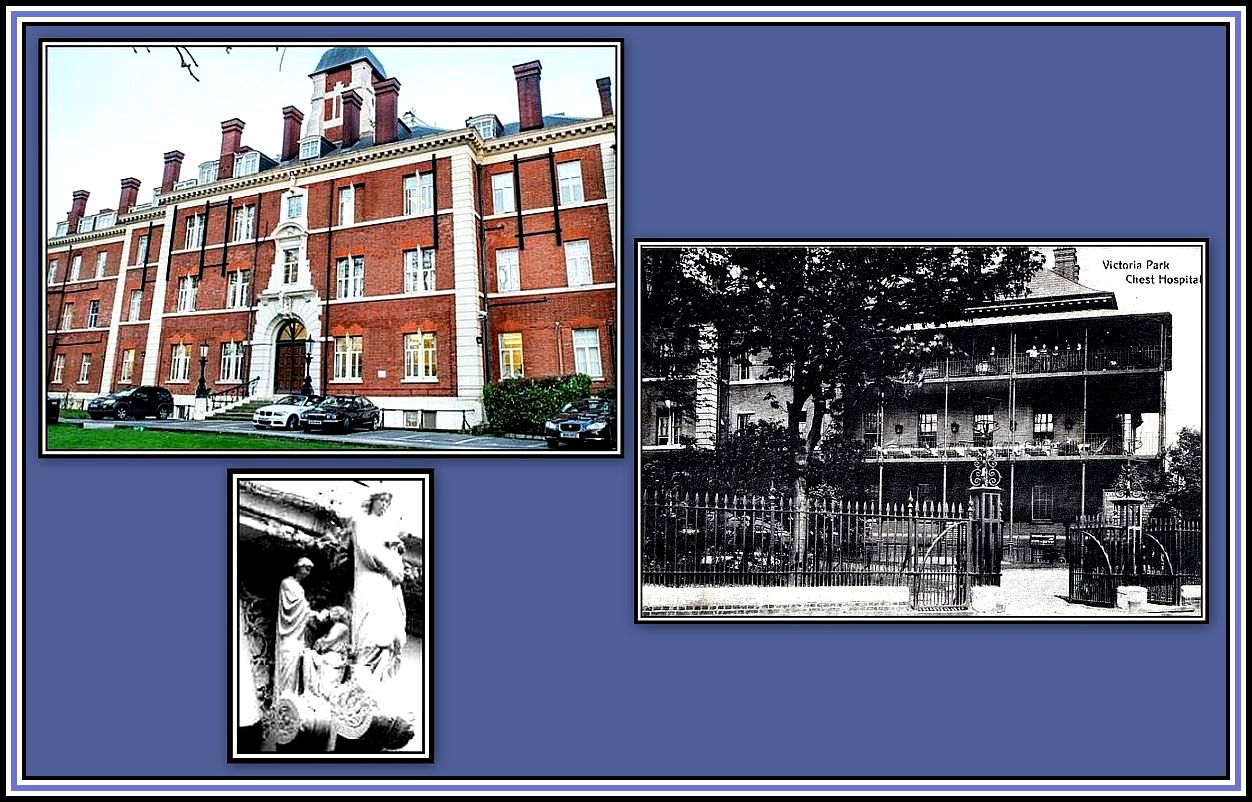 Top Left: The London Chest Hospital
Top Left: The London Chest Hospital
Right: Tuberculosis is treated with medication and lots of fresh air, hence the verandas at the rear
Bottom Left: statue over the main entrance showing nurses treating patients
The London Chest Hospital was founded in 1848 by Thomas Bevill Peacock, and first opened in 1855. The Hospital was built adjacent to Victoria Park, and when I was a child, specialised in the treatment of Tuberculosis. Apparently The Hospital was also a centre for cardiac care, but in April 2015, the authorities announced that the hospital is no longer up to the demands of rigorous specialised 21st Century medicine and was closed. The building has since been sold to Circle Housing.
-oOo-
Also in 1898, The Federation of London Working Lads’ Clubs opened its East End Centre at Oxford House.
The Federation of London Working Boys’ Clubs was founded in 1887 when a number of Clubs came together to provide an organisation to produce a unified policy and provide backup services for the Boys’ Clubs Movement. Many of the Clubs had been organised by universities, public schools and public-spirited individuals with the specific purpose of serving underprivileged and exploited boys in London, particularly the East End. The Clubs provided recreational activities and many acted as education and welfare institutions. The Clubs were often the only placed where the boys were able to obtain medical attention, clothing and food.
The Federation of London Working Boys’ Clubs was renamed in the early 20th century as the London Federation of Boys’ Clubs, and changed its name again in 1994/1995 to the London Federation of Clubs for Young People to reflect the changing social situation and the increasing inclusion of girls.
St. Anthony’s Club was founded in 1902 and was markedly different from other clubs formed through the auspices of Oxford House, as it was set up specifically to attract Hooligans! The primary aim of the Club was to attract the rougher boys of the area who were under the age of 14 and help to direct them in habits of discipline and self-restraint. These boys were severely under-privileged and more often than not had to rely on their wits to survive.
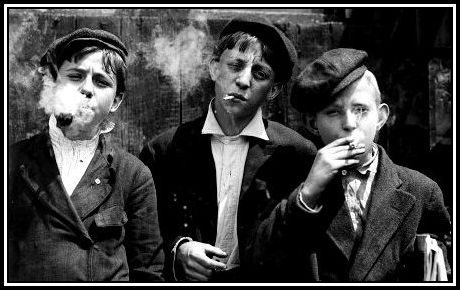
In 1906, St. Anthony’s Club changed its name to The Eastborne Club since Eastborne College had taken over the responsibility of running the Club.
-oOo-
Oxford House made a number of attempts to help improve the education of the populace of Bethnal Green. Sadly, although they were received at first with much enthusiasm, attendance tended to fall-off, causing their discontinuation:
- A Lecture Series was offered to the local people during the winter of 1893-1894, which including lectures on a wide range of subjects.
- In 1896, attempts were made at Oxford House to offer University Extension Lectures. The first course offered was in Political Science. A course in The Chemistry of Air, Fire and Water was given in 1897 followed by a second course in Electricity. Unfortunately, although these courses were were received at the start, attendance soon fell and the Council decided not to continue offering Extension Courses.
- The authorities of Oxford House made an attempt to further the education of the local populace by sponsoring classes in 1904 with professional teachers. These were favourably looked upon by the Board of Education. However, further attempts to organise classes over the coming years failed to attract the numbers hoped for and, sadly, these classes were abandoned in 1910.
In 1913, an attempt was made to start a branch of the Workers’ Educational Association (itself founded in 1903) was made. Trade Unions and Friendly and Benefit Societies were canvassed and a tutorial class was formed. However, it was found that many of the men attending these classes were representing their Societies and Unions, which had now had their interest and took up their time. In addition, the availability of cheaply produced books meant that knowledge was now more easily obtained by those seeking it.
Over the years, these Unions and Societies played a significant role in the decline in lecture and Club memberships at Oxford House.
-oOo-
Later in 1935, efforts were made to set up a Training Scheme for Ordinals. However this was discontinued in the following year, but restarted in 1937. One of the aims of this scheme was to give instruct on how best to teach religious subjects and supervision in Sunday schools etc. (see later).
-oOo-
OXFORD HOUSE & ENTERTAINMENT
In 1898, The Reverend H.S. Woollcombe was Head of Oxford House with Mr. A.P. Charles as Honourary Manager of Entertainments. At this time, Mr. Charles, who was said to be a man of great enthusiasm, formed The Musical and Drama Association.
Oxford House favoured founding such an Association since it had long since had the specific aim of providing good entertainment to the people of Bethnal Green at reasonable prices.
The House had hoped to build a Hall for its presentations on the site of the old Oxford Hall. Such a venture would have proven costly and would have drained monies from its other programmes. Once it was learned that The Excelsior Hall & Swimming Baths was to come onto the market, The House was eager to obtain the lease.
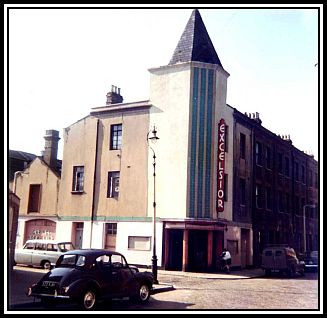 Excelsior Hall as a Cinema during the early 1960s
Excelsior Hall as a Cinema during the early 1960s
Prior to the building of The Excelsior Hall & Swimming Baths in 1889, Bethnal Green had no Public Hall suitable to hold large meetings and no Public Baths. Oxford House evidently believed that The Excelsior Hall & Swimming Baths would be ideal to help it fulfill its needs.
The building came onto the market in 1898 and Oxford House was able to obtain an eighty-year lease for the sum of £4,000. The House went on to maintain its association with Excelsior Hall in its various incarnations until it sold what remained of the lease in 1965.
-oOo-
I have written extensively about on the history of Excelsior Hall,
both as part of Oxford House and as a cinema, at my other website, East End Memories,
which may be found by
What appears in the NEXT SECTION of this series is an expanded history of
EXCELSIOR HALL with reference to its relationship to
OXFORD HOUSE and THE MUSICAL AND DRAMA ASSOCIATION
which I hope the reader will find of interest.
——oooOOOooo——
ACKNOWLEDGEMENTS
I would like to thank Mr. John Ryan and Ms Maja Bevk of Oxford House (OH!) for their help in the preparation of this series.
——oooOOOooo——
Readers can TWEET their LIKES & DISLIKES to me at
or
make comments on the Website’s FACEBOOK PAGE
or
consider leaving a Comment below.
——oooOOOooo——
ACKNOWLEDGEMENTS
I would like to thank the author(s) of The Oxford House in Bethnal Green (1884-1948), which provided much of the material detailed here. I would also like to thank Mr. John Ryan of Oxford House for his help in the preparation of this piece.
——oooOOOooo——
Click here to read about OXFORD HOUSE & ENTERTAINMENT
——oooOOOooo——
Click here to RETURN to THE FIRST OXFORD HOUSE
——oooOOOooo——
Click here to RETURN to TOYNBEE HALL
——oooOOOooo——
Click here to RETURN to THE SETTLEMENT HOUSE Home Page
——oooOOOooo——
Click here to go to the TABLE OF CONTENTS
——oooOOOooo——


Bravo! Great to see this whirlwind tour throgh the amazing history of Oxford House. I like the way to you pivot to related themes such as the impact of poor health and insanitary conditions Bethnal Greeners faced and how the new welfare state provosion such as the NHS transformed life for many.
Many thanks for visiting my website and for taking time to send a comment.
With regards.
Charles